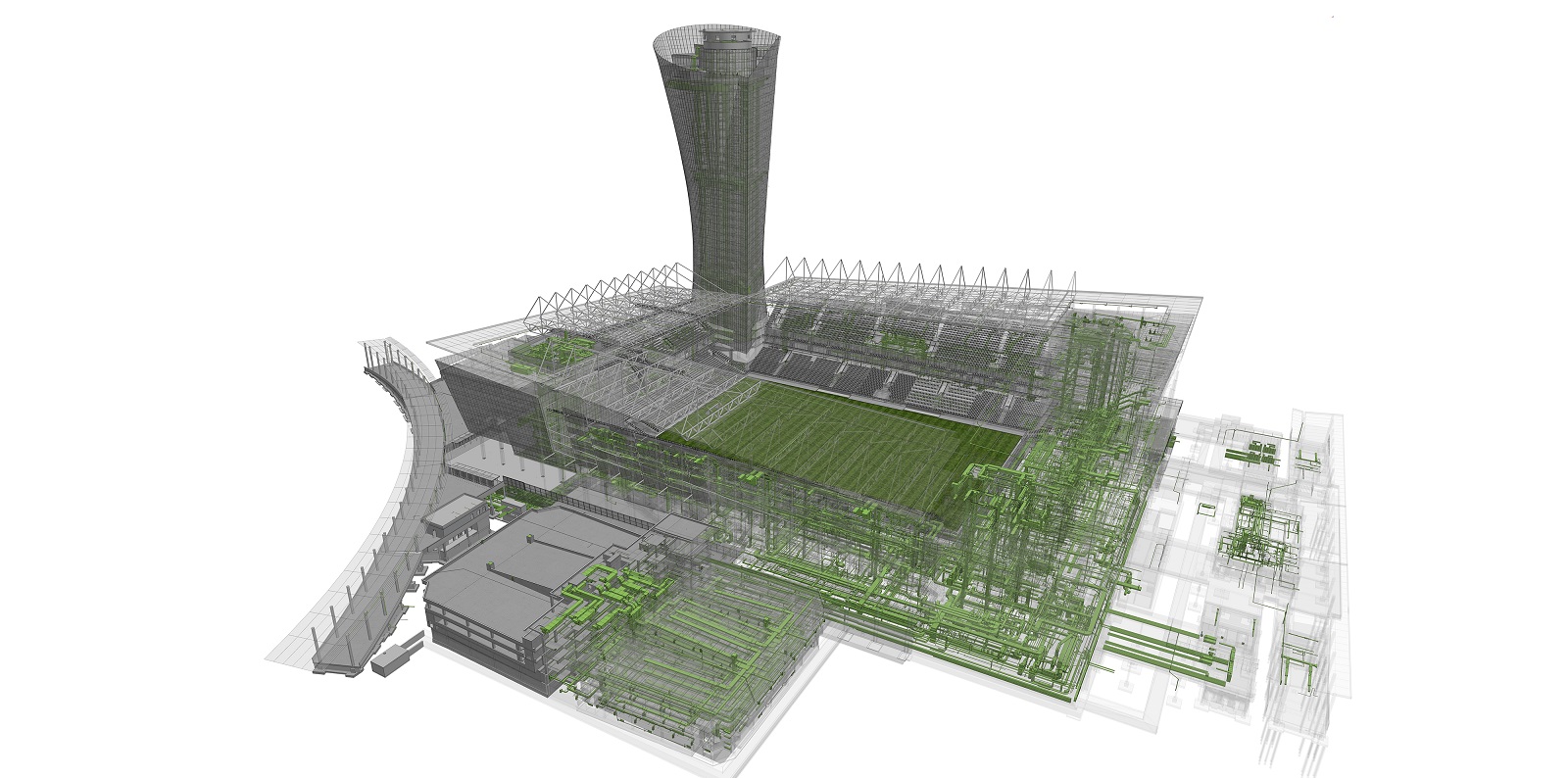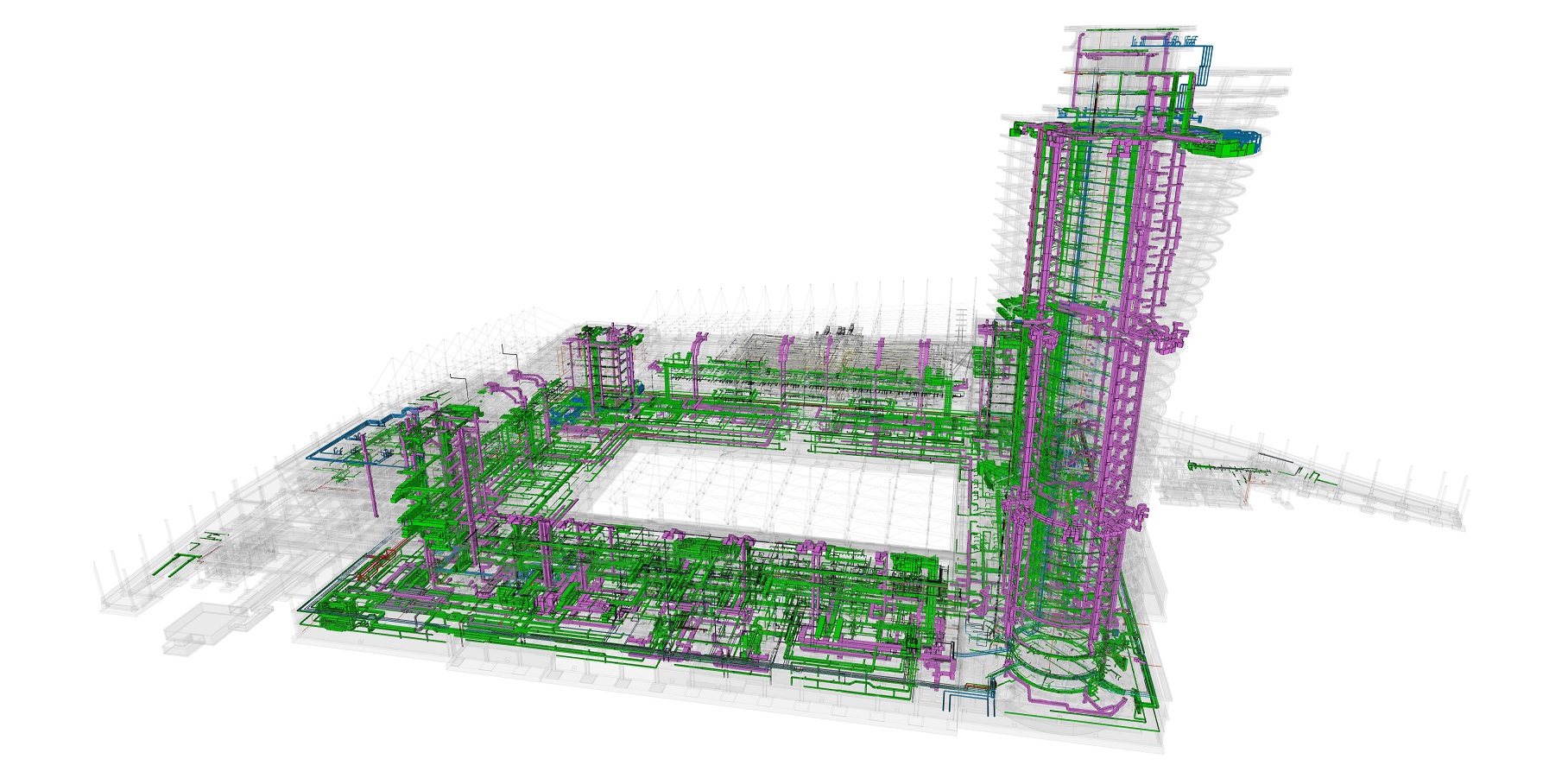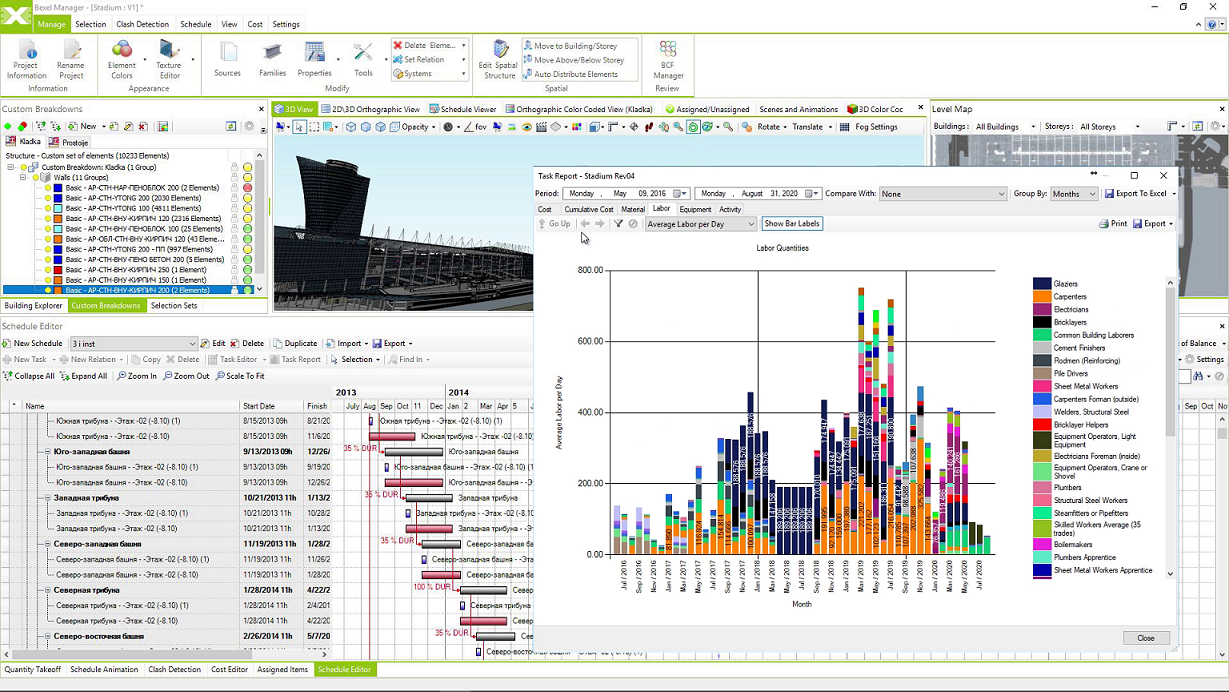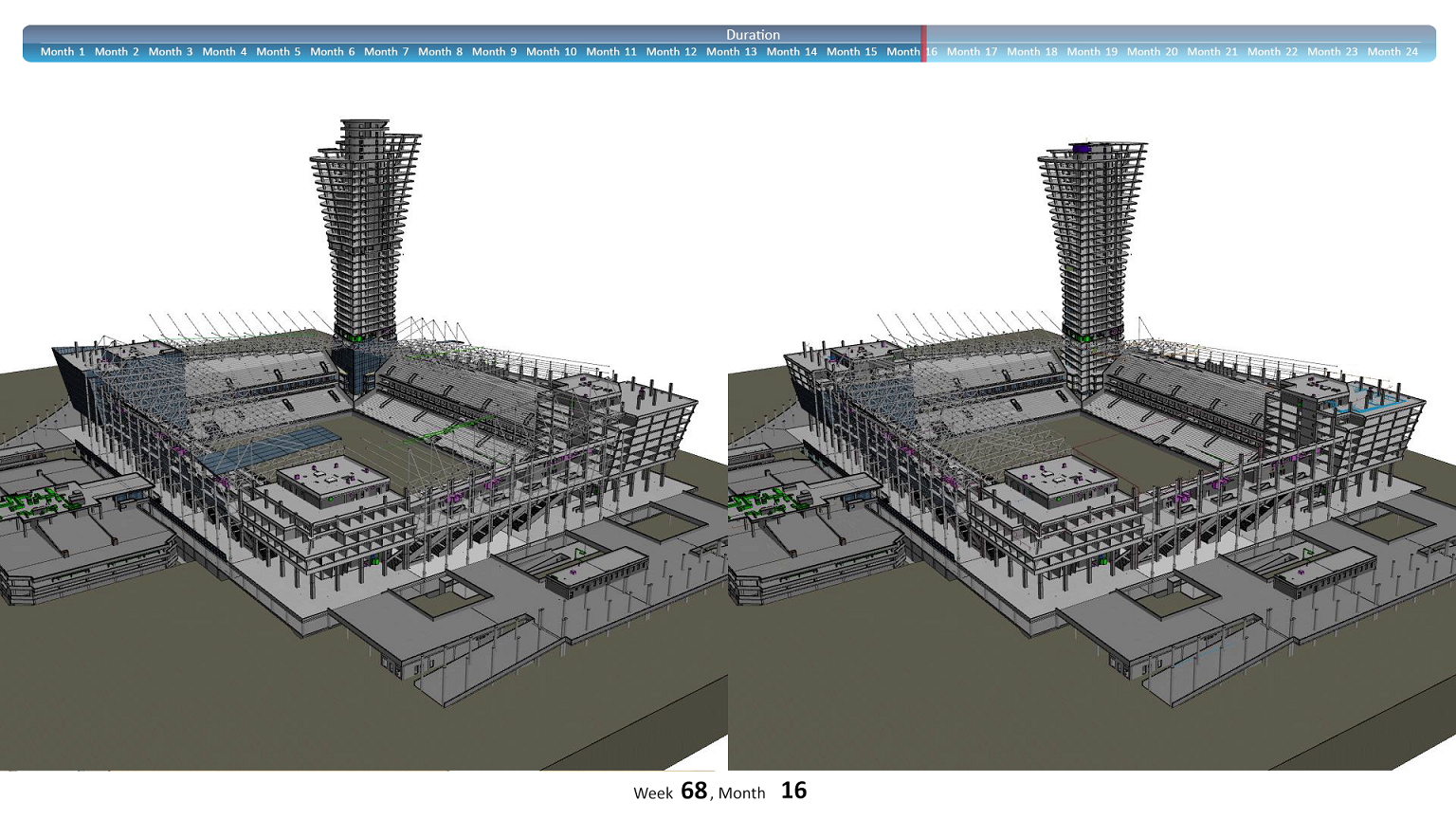CSKA Moscow Stadium
Implementation
Published by:
Datasheet
Description
Project description
The new stadium for one of the largest and most successful football clubs in Russia, CSKA Moscow. The stadium has a capacity of 30.000 people, and the integral part of it is a skyscraper aimed to resemble the UEFA Cup, first European trophy won by a Russian club with CSKA beating Sporting CP in 2005. The 142-meter-tall skyscraper stands in the south-west corner, and the remaining three corners also have office spaces and skyboxes instead of regular stands. The project includes the 1.400 car park spaces, and the total project area exceeds 175.000 m².
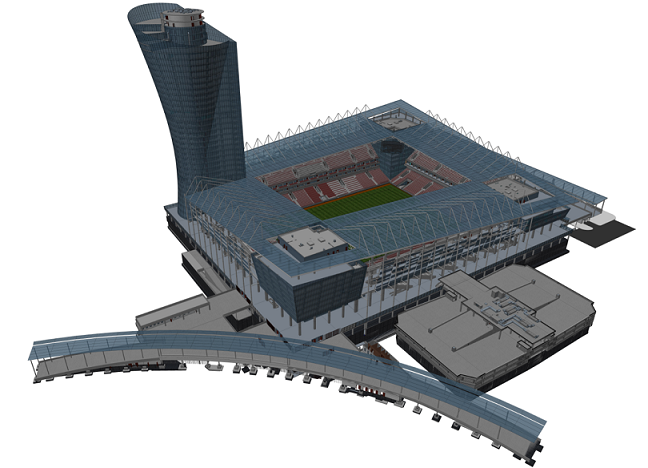
BIM Implementation
Building Information Modelling was introduced by the design-build general contractor, at the beginning of the detailed design and has been implemented during the entire construction phase.
The following goals of BIM implementation were defined:
- Improve the quality of design documentation delivering coordinated clash-free design to ensure a smooth construction process
- Develop precise quantity take-offs with visualizations to be used by the main contractor to agree on quantities with both investor and subcontractors, and support monthly payment certification
- Support contractor’s planning team in developing a construction schedule and developing the 4D/5D construction simulation
- Integrated time and cost monitoring of the construction progress providing a regular progress report, planned vs. actual analysis and earned value analyses and executive reports
BIM Deliverables
The BIM model of approximately 400.000 BIM elements has been developed at LOD300 of and has been kept up-to-date during entire project execution.
Considering the complexity of the project, clash detection and design coordination process was very beneficial, identifying and resolving more than 3.200 of actual major spatial conflicts and discrepancies among design disciplines (more than 20.000 minor conflicts were identified using BEXEL Manager), saving approximately 4 months of construction time, and prevented the estimated loss of 3 million USD. The coordination process has been carried out through regular weekly meetings with the design team and took one to five iterations of clash detection to reach the coordinated design in different project areas.

Based on the coordinated BIM model, the correct builders work drawings were extracted saving significant costs and effort, especially important for the tower building where the high concrete class was used and any drilling works would be very costly and would waste a lot of time and effort.
BIM Quantity Takeoffs, supported with visualizations from the BIM model were made for every major work group in the tendering phase, ensuring mutual understanding with the subcontractors that led to direct savings to the contractor, achieved in three ways:
- by lowering the initial subcontractors’ proposals in terms of quantities and prices
- by precise tracking of executed works quantities
- by claiming, supporting and approving additional quantities from the Investor as a result of design changes
In total, the Contractor benefits from BIM Quantity Takeoffs with direct savings of 3.17% of the total contracted value.
From the earliest phases of construction planning, using BEXEL Manager, 4D/5D simulations were developed and construction schedules analyzed to confirm that no works have been omitted from the schedules. 4D BIM model was also used to provide planners with precise quantities related to every scheduled task, significantly improving the quality of the construction schedule. Linking the agreed unit prices 5D estimations such as cash flows were developed and construction schedule adjusted accordingly. Due to various unpredictable market changes which appeared during project execution, 4D/5D simulation has been updated eight times by inputting costs changes and the actual construction progress, in order to provide contractor’s management with valid information on the current progress and value earned, as well as estimating the planned costs for the following period. Regular executive reports with planned vs actual analyses were created, enabling contractor’s management to keep track of the project execution, react to market changes, and successfully finalize this rather complex landmark construction project.
Implementation sector
- Consulting












